Our next to last shelter visit was actually two visits in one. We would visit the Giles County Animal Shelter, and also meet with some of the volunteers from the Giles County Humane Association, a foster-based rescue that supports the shelter.
This Humane Association/County Shelter partnership model is fairly common and usually turns out to be a good one for the dogs. While County shelters can’t fundraise and are limited to the budget they are given, a Humane Association isn’t and they can provide immediate support in areas where it is needed most – like veterinary services not covered in the budget, supplies, foster care, and when funds run low, collect donations of essentials like food and dewormers.
Giles County hadn’t been on my original list of shelters to visit. It was the Giles County Dog Pound back then, when a woman named Daphne, reached out to me through Facebook. “You have to see what is going on in Giles County,” she wrote.
I was intrigued and began looking into it. I was shocked by what I discovered. The official word was the pound had been closed last October by the District Attorney General’s office and all the animals moved to other counties.
The shelter had re-opened in July, but the investigation was ongoing. Rumors continue to abound as to why it was shut down, but I don’t want to circulate anything unsubstantiated, and to be honest, I truly pray none of the stories I heard are true.
The history of dog rescue in Giles county is a bit of a dark one, but happily, I can say that things have quite definitely changed in Giles county.
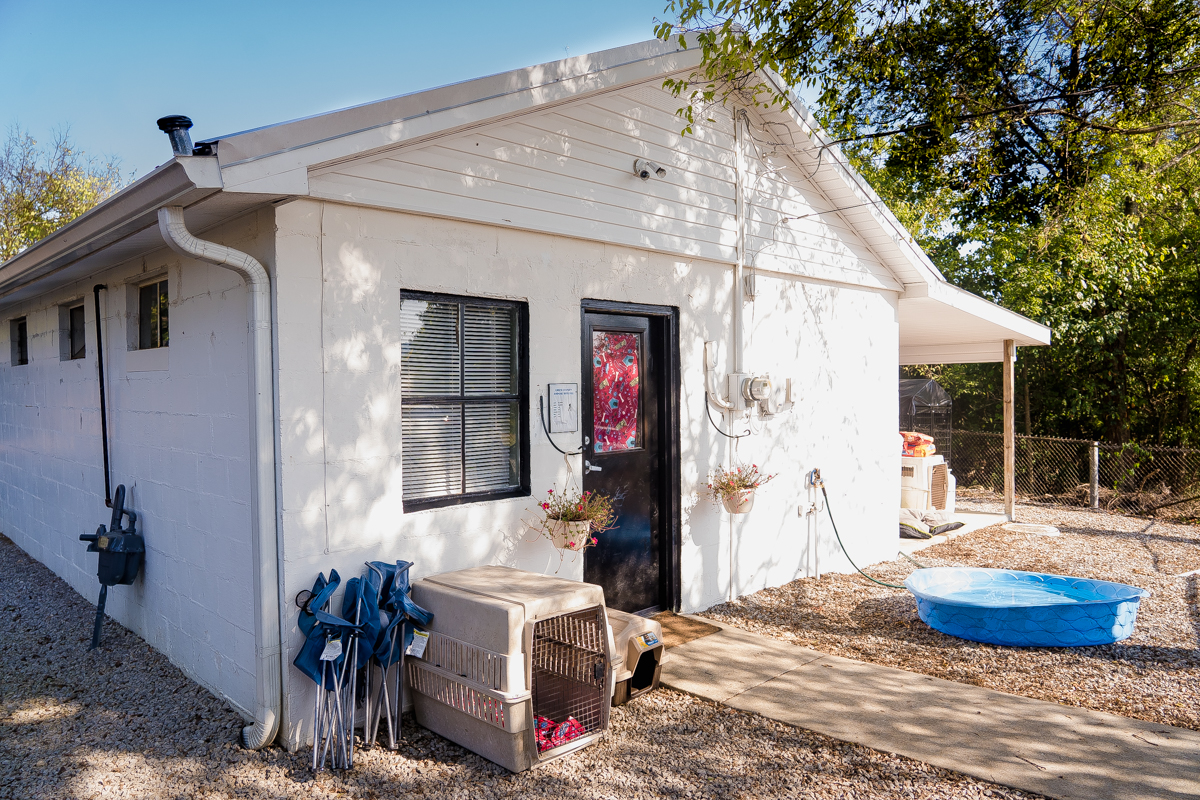
In June, Morgan Sutton took over as director for the newly christened Giles County Animal Shelter, same building just a better name and new leadership. Morgan is an experienced animal control officer with a quiet manner but a strong desire to rewrite the story of Giles County.
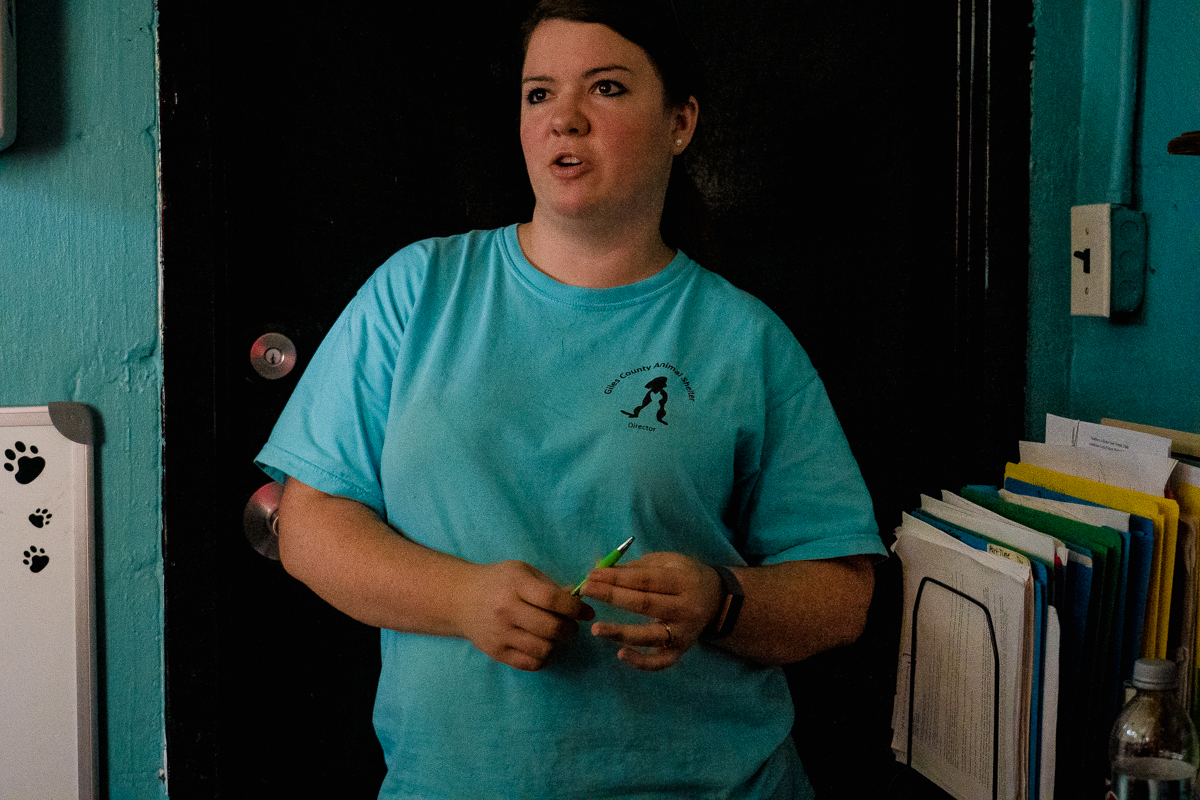
Since July, the shelter has taken in 120 dogs and only had to euthanize for extreme aggression. Currently, the shelter has forty-six dogs and they are full. They don’t accept owner surrenders, so their dogs are strays or seizures.
Morgan confessed later to being a bit apprehensive about our visit. Considering the history and the ongoing investigations, this was understandable, but I tried to reassure her that the reason Nancy and I were traveling to shelters is to help in any way we can by shining a light on the situation. I’ve been to thirty-seven shelters and rescues now and am beginning to understand the public struggle for shelter directors, but I can’t know the personal one. That said, I am certain that this job is extremely hard on the heart.
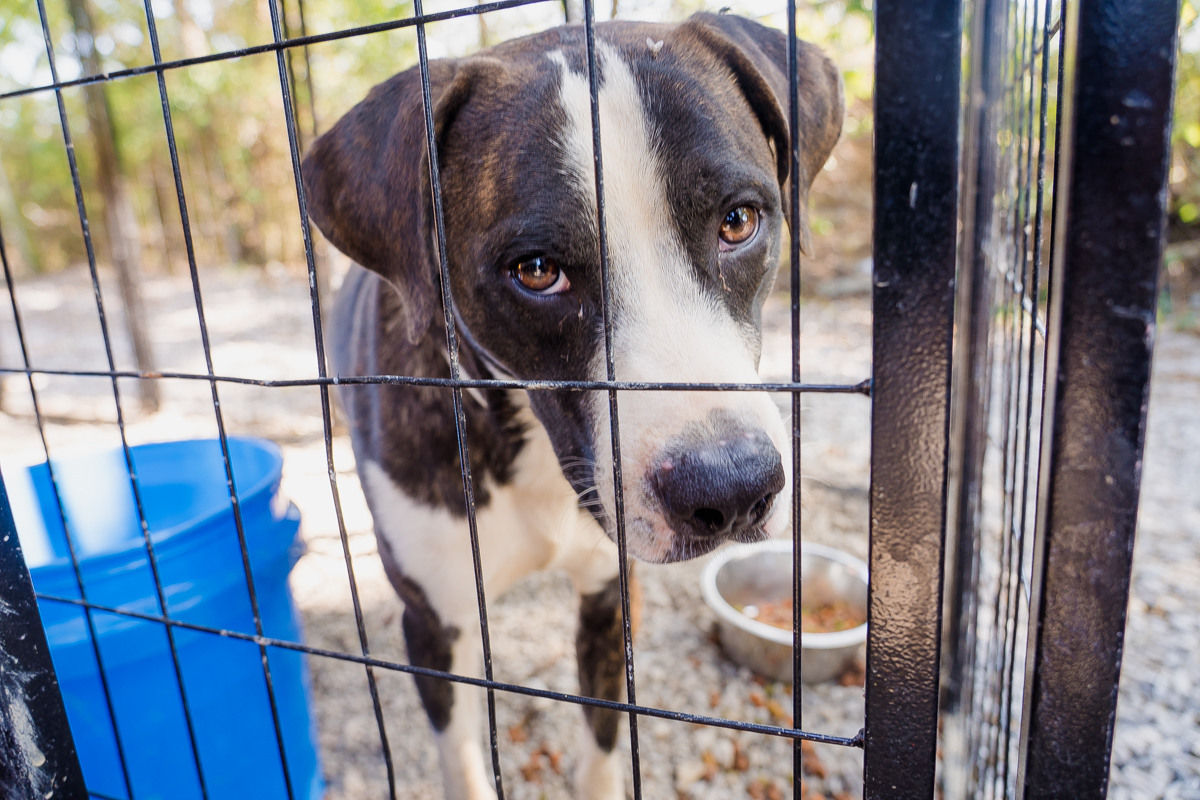
Morgan is young and bright and hopeful. Her plans include providing even better care for the dogs, who all seemed happy and healthy when we visited. She wants to know her dogs well so that she can figure out exactly what each one needs so she can help it find the right home. “They deserve it,” she tells me with a determined glint in her eye. She would love to have more volunteers and is very grateful for the help she has from the Humane Association and others.
When I asked her what she thinks is the solution needed in Giles and other rural counties, she told me that obviously spay and neuter are critical to control the population, but she also believes the key is educating people.
As an Animal Control Officer, she says her job is to enforce and to educate, equally. “Some people just don’t know how to properly care for their animals.”
In her years as an ACO, she has always strived to give people the benefit of the doubt and to explain to them why their chihuahua can’t live outdoors in the cold or what is wrong with allowing your unneutered dog to run loose. She will do what she can to help people properly care for their animal; she’d much rather keep that animal in its home than put it in the shelter.
I think Morgan is representative of a new attitude among ACO’s. If they all could see their job the way Morgan explained it, I think they would have a powerful effect on their communities. ACO’s are not the bad guys, but they get painted as such too often, and may understandably be hesitant to give people the benefit of the doubt.
I asked Morgan about their longest resident and she introduced me to Stella
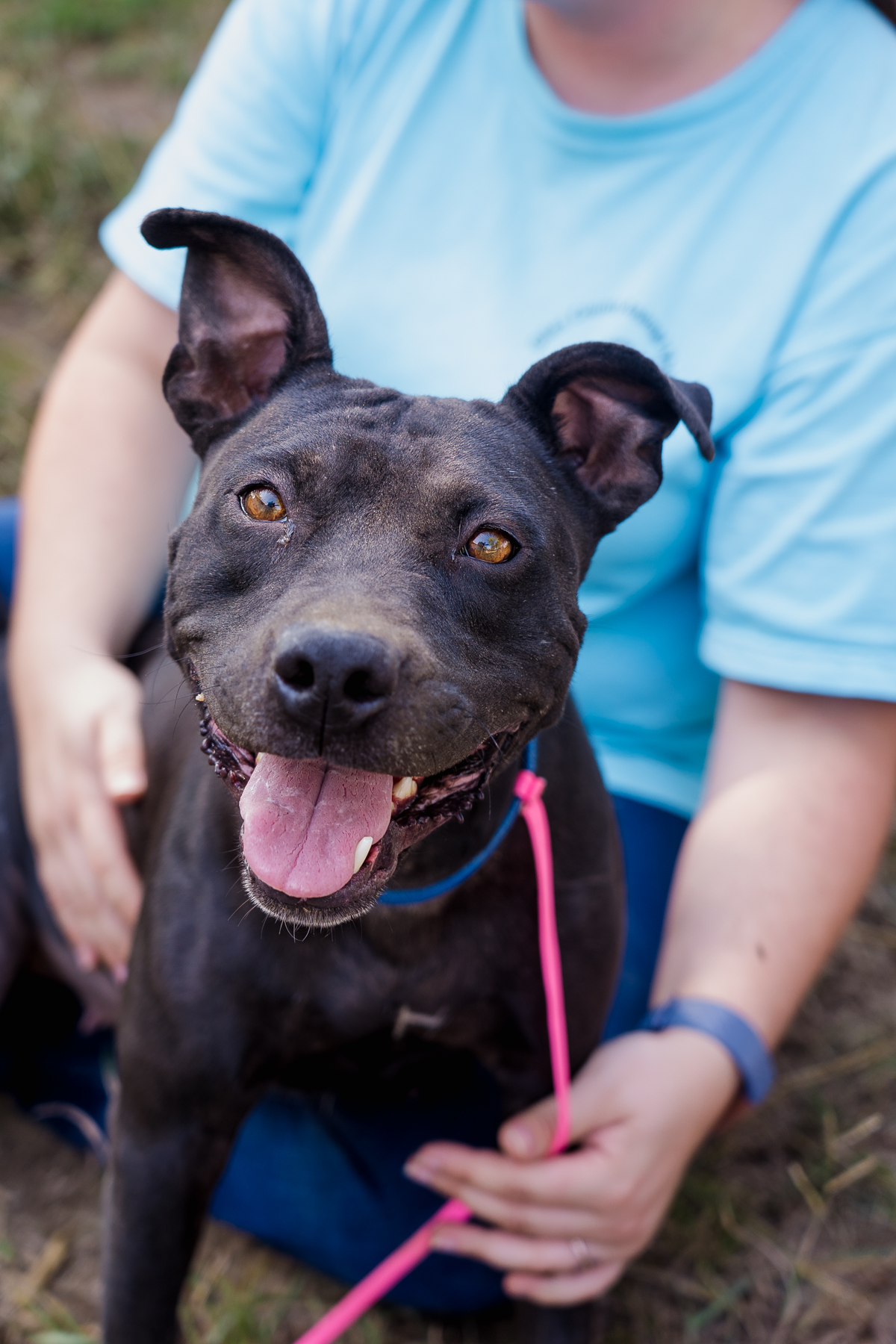
and we made a short video.
Giles has some indoor kennels, but most of their dogs are outside in large, airy kennels with covers.
I was immediately smitten by a stocky, yellow dog with cut ears named Tito.
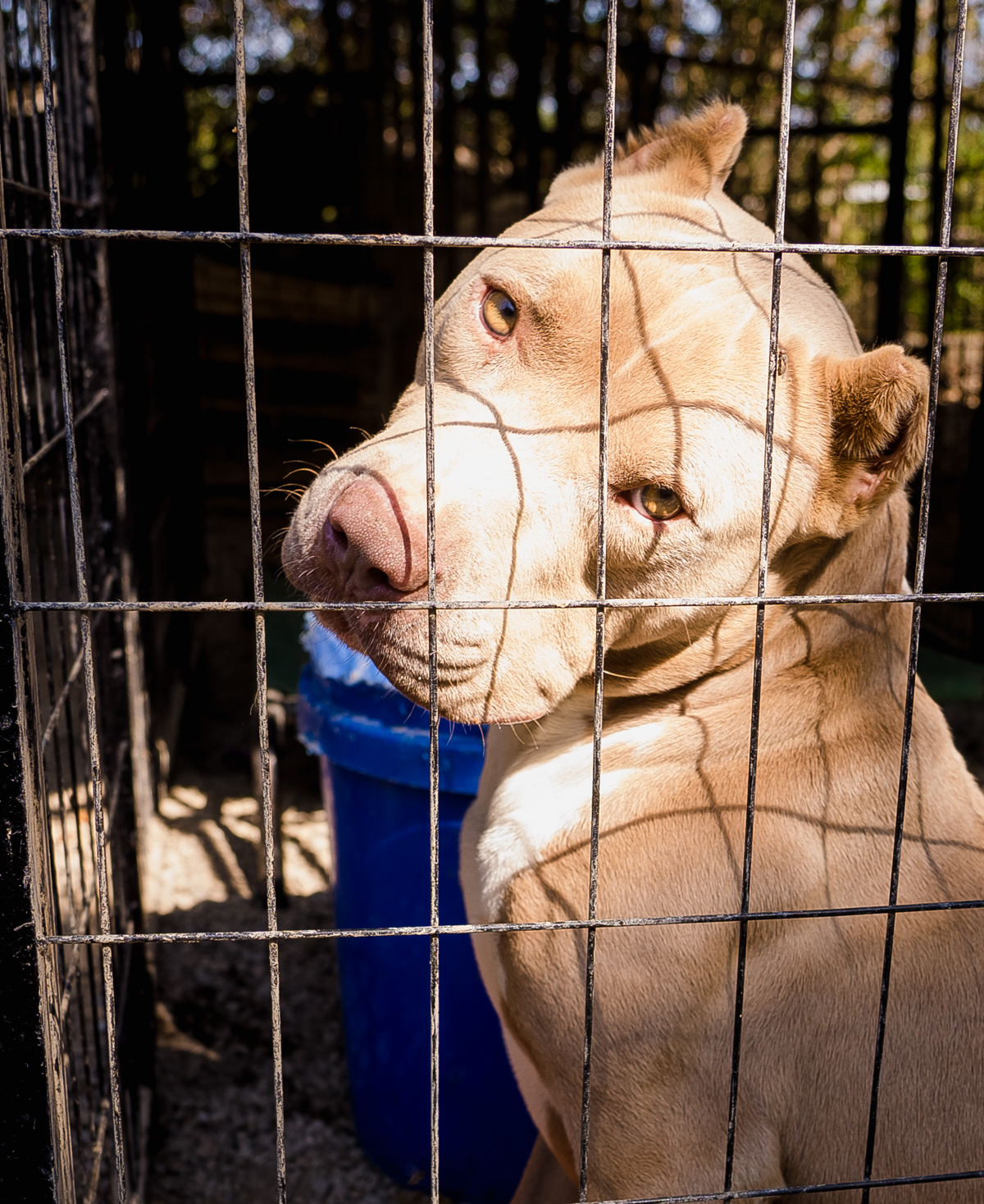
I sat with Sherry, from the humane society beside his kennel and he leaned hard into my touch.
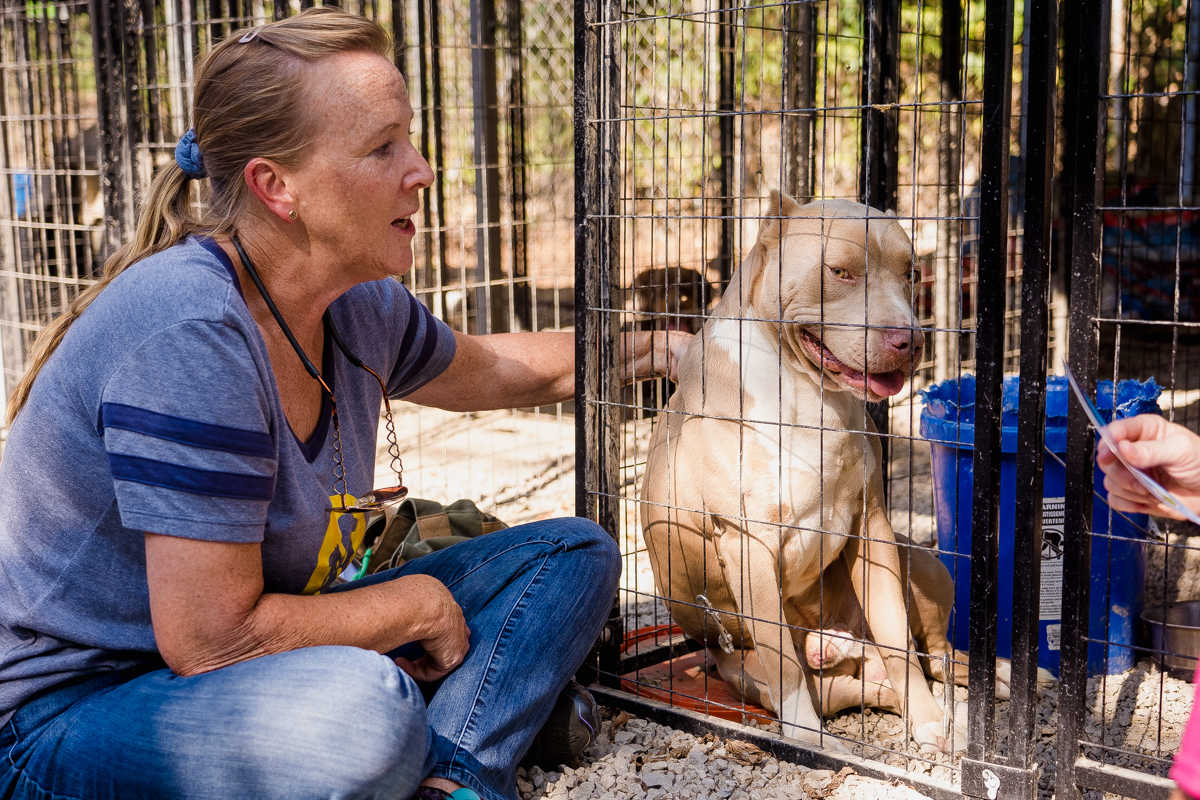
Sherry told me that the Humane Association has about eighteen dogs in foster care. Margie and Marcie, other Humane Association fosters and volunteers were also there to meet us.
It was encouraging to meet these women who are committed to helping Morgan and Giles County succeed. They shared with me a copy of a hand-written report from the previous director that showed a euthanization rate of about 80%. The animals that did make it out alive, did so via the Humane Association. Since 2011, they have saved 1759 dogs and 417 cats, plus spayed 1842 animals through their program.
Before we left, I could not resist getting my hands on sweet Tito, so we made a quick video of him also.
But the coolest thing that happened while we were there was a young man came to adopt a dog. At so many of our visits to the shelters, we never get to see this because sadly, so few happen. This one was pretty special.
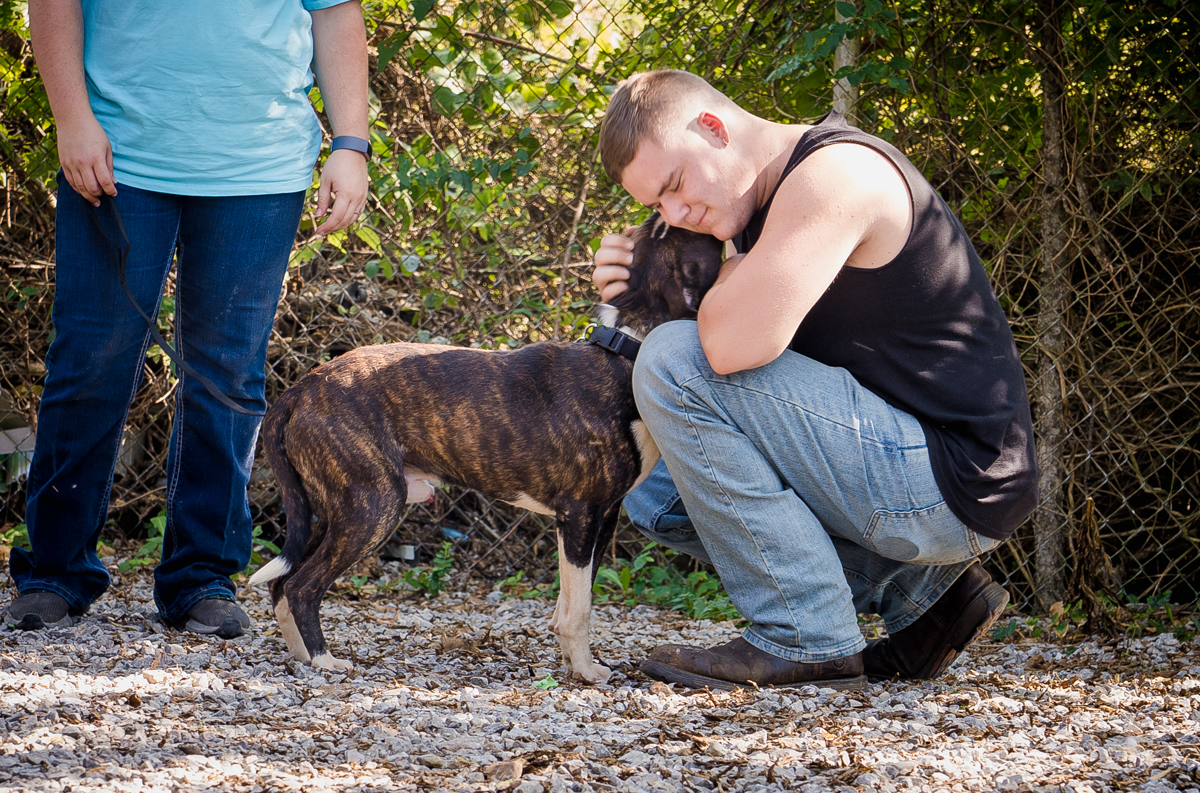
Giles County Shelter is getting back on its feet and under Morgan’s qualified and committed leadership, I’m certain the future only gets better from here. But Morgan could use a lot more help. More local volunteers are needed. Sherry mentioned that finding a volunteer to help them get their dogs advertised online through petfinder and Facebook would be a godsend.
As a public shelter, Giles County can’t ask for monetary donations, but the Humane Association can, so if you’d like to help this tiny shelter get back on its feet and support the work that Morgan has begun, you can donate to the Humane Association, via paypal at the email address, gilescohumane@gmail.com and mark it ‘for Giles Shelter’. They will be sure Morgan gets the money to spend where she feels the shelter needs it most.
Giles Shelter also has an Amazon wishlist if you’d like to send an item directly to the shelter.
Stories like Giles Dog Pound abound, only all too often they still don’t have the happy ending that Giles has—I wish that situations didn’t have to become a crisis before our government acts to fix them. Several of the shelters I’ve visited this past year only saw an increase in budgets to include distemper shots after a distemper outbreak that ended with them destroying dozens, if not all of their dogs.
Other than state-mandated rabies shots, many, many municipal shelter budgets include minimal medical funds. I don’t see how we can ever slow the flow of homeless dogs until every publicly funded shelter spays/neuters and vaccinates every animal in their care. Sure, I’d love for them to also deworm, de-flea, and administer heartworm tests and preventatives, but starting with basics like distemper vaccines and spay/neuter would certainly have an impact.
We have some exciting upcoming news to share plus more shelter stories, sobe sure to subscribe to this blog (on the right side of your screen!), follow us on Facebook and/or Instagram, and don’t hesitate to reach out if you have an idea to share or would like to see us visit a shelter that needs to be highlighted.
Until every cage is empty,
Cara
p.s. Who Will Let the Dogs Out has an Etsy shop and Nancy adds more fun items every week, so be sure to check it out. All proceeds go to help shelter dogs and the heroes who care for them.



Martha Kennedy
What a beautiful story — and yeah. A lot of people don’t know how to care for their dogs. It’s pretty simple, but they also don’t want to learn. When I first moved here and tried to get an amendment passed to the city ordinance that would allow police to ticket people for chaining dogs outside on short ropes/chains, whatever, it was kind of a nightmare, partly because I came from “outside” and ran up against a bunch of old, fat, white guys who ran the town. My whole point was education, not punishment. I remember walking into that meeting with the city attorney, city manager and police chief and hearing, “So you want to outlaw tying dogs outside.” I didn’t. I knew that for a lot of people it was impractical. But it could be done better. Only the police chief (finally) understood what I was saying. I had written it but no one read my amendment that said, clearly, “Humane tethering of dogs”.
Cara Sue Achterberg
That’s the biggest part of the battle – education. and there definitely is a defensiveness that is pervasive in some places that have a terrible history of how they treat animals. Not Giles county, though, Morgan asked me several times – what can we do better? I’m no expert and she was doing things really well already, but that’s the kind of attitude that’s needed.
Martha Kennedy
<3 exactly